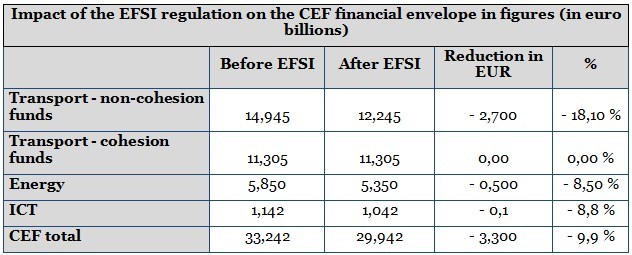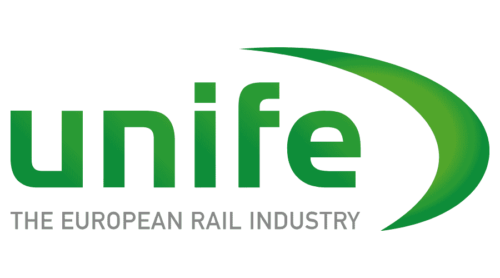OPEN LETTER ON THE COMMISSION PROPOSAL FOR A REGULATION ESTABLISHING A EUROPEAN FUND FOR STRATEGIC INVESTMENTS
The undersigned stakeholder associations highlight the important need for investment in transport infrastructure. In the TEN-T Guidelines, the European Parliament and Member States have agreed on a policy that is to guide decisions as to which transport projects should receive funding as a matter of priority. According to the 2011 Transport White Paper, more than EUR 1.5 trillion will be needed in the period 2010-2030 to develop transport infrastructure to match demand*. Therefore, we strongly welcome the initiative of “An investment Plan for Europe” and are ready to support all efforts towards a renewed European economic boost through investments in key infrastructure projects.
Nonetheless, we would like to draw attention to three major concerns we have regarding the current proposal:
- The EFSI budget will drastically limit the CEF envelope for grants.
- Investments under EFSI will not follow the TEN-T priorities for funding of transport infrastructure and the prioritization as defined in the Corridor approach.
- The money transferred to the EFSI is not ring-fenced for transport investments.
Of the EUR 8 bn that are to be taken out of the EU budget for the new guarantee fund, EUR 2.7 bn are to come from the transport envelope of the Connecting Europe Facility (CEF), in particular from the headings “Removing bottlenecks, enhancing rail interoperability, bridging missing links and improving cross-border sections”, “Ensuring sustainable and efficient transport systems” and “Optimising the integration and interconnection of transport modes and enhancing interoperability”. This means that the overall sum available for grant funding of transport projects (in non-cohesion countries) is cut by more than 18% by the EFSI proposal. The existing CEF envelopes for financial instruments and transport investments in cohesion countries remain untouched.

The TEN-T Guidelines defined a stringent methodology for the eligibility and priorities of transport infrastructure. During the past year, the Commission, member states and infrastructure managers have jointly worked on corridor work plans that are to identify the priority projects with the highest European added value that should thus be the first recipients of EU funding. However, under the EFSI, any European transport project independent of location and mode of transport can receive funding. This shifts the logic away from the carefully chosen transport priorities of the CEF and TEN-T.
Therefore, the reallocation of financial resources from the CEF budget to the EFSI is much more than an attempt to attract new private resources to projects of European economic and social added value. It is, rather, a policy change that must be assessed thoroughly: other projects will be promoted instead of the ones which were identified as a priority by CEF, at the same time cutting the EU spending capacity for grants to projects of the TEN-T network.
Moreover, the EFSI does not ring-fence money for any particular type of investments. Different sectors ranging from energy, to education and health will be competing for financing. The money transferred from the CEF could thus end up being absorbed by other sectors if these are better able to present mature projects with clear revenue streams.
We therefore ask the decision makers in the EU institutions to take into account the concerns of the undersigned, and to ensure that the money dedicated to transport infrastructure in the Multiannual Financial Framework and the Connecting Europe Facility continues to serve the transport objectives defined in the TEN-T Guidelines.
The signatories:



*The completion of the TEN-T network requires about € 550 billion until 2020 out of which some € 215 billion can be referred to the removal of the main bottlenecks (Transport White Paper 2011, page 14)
